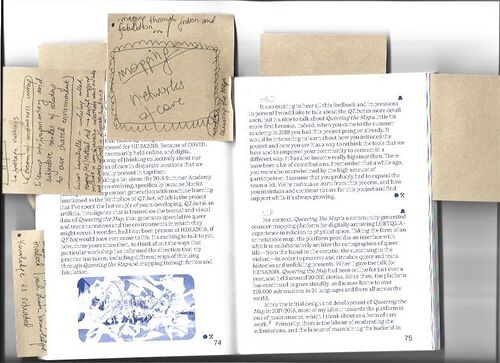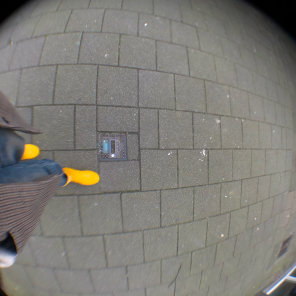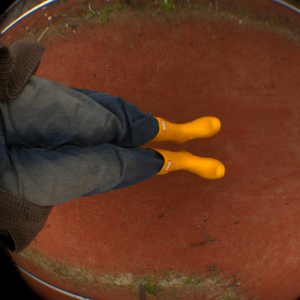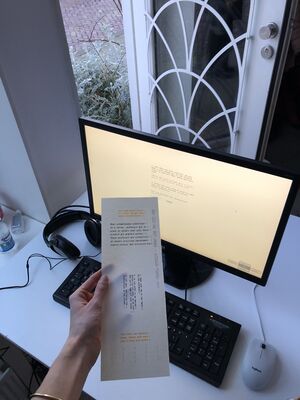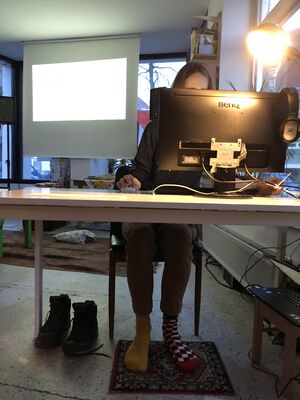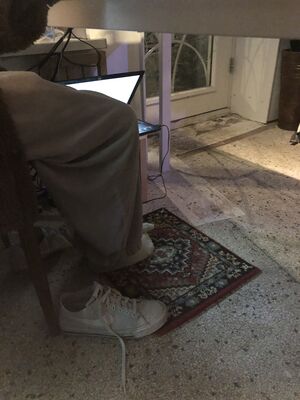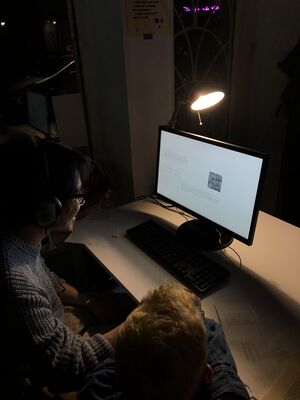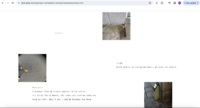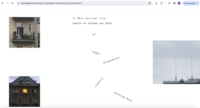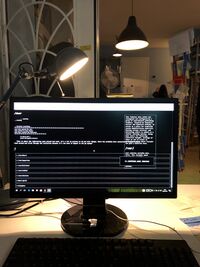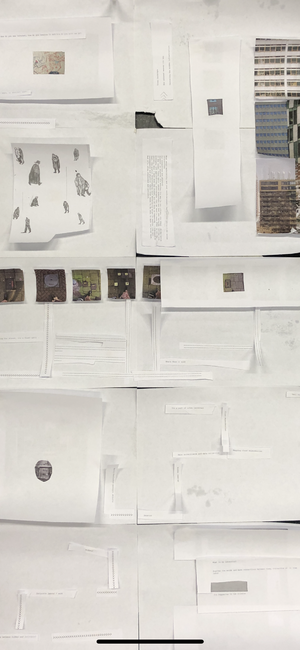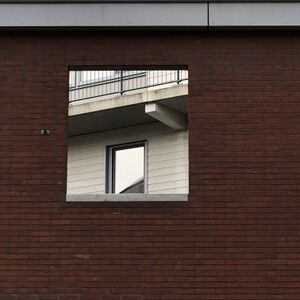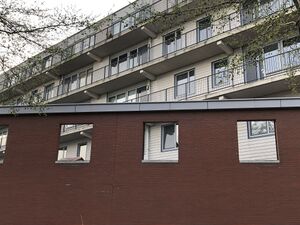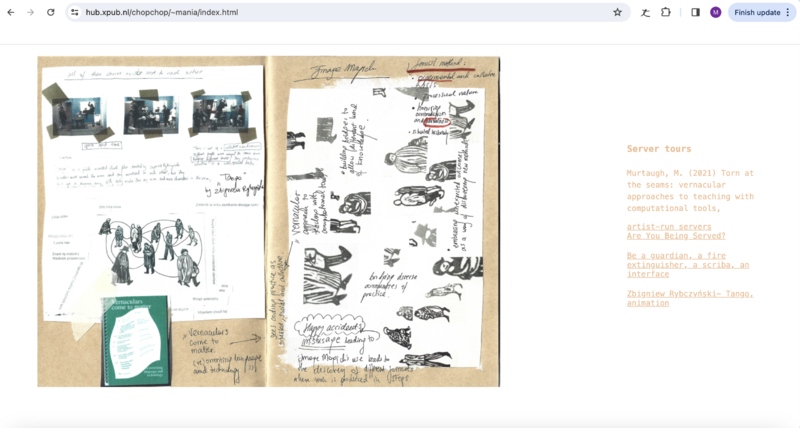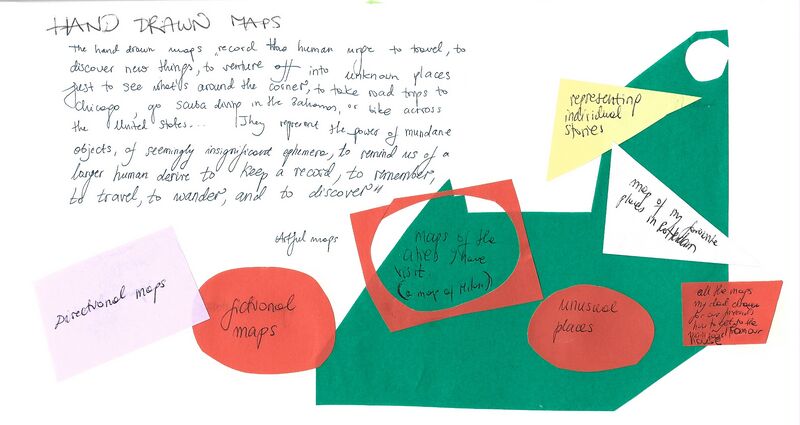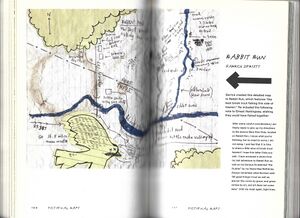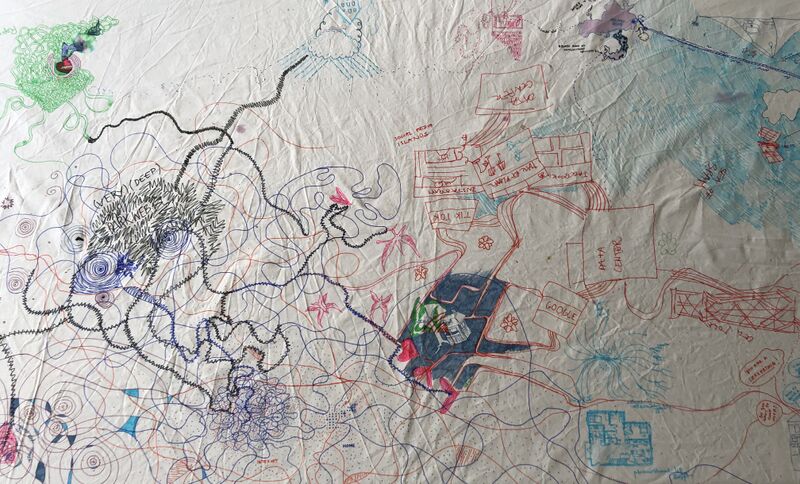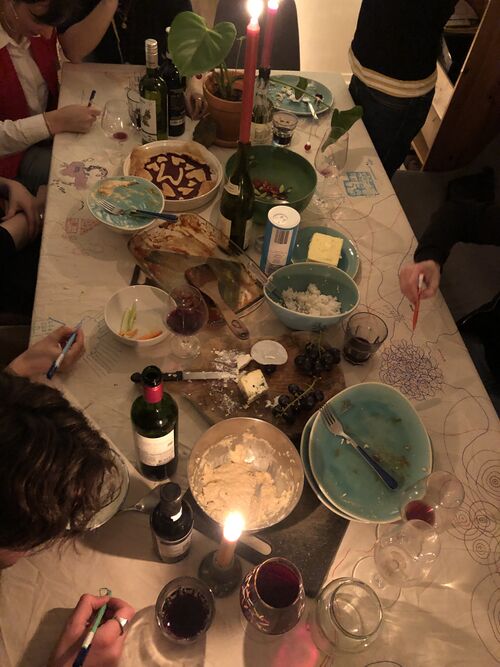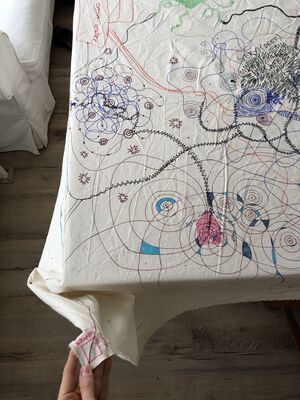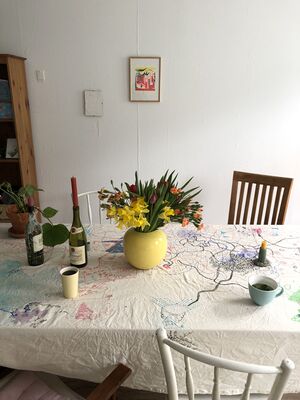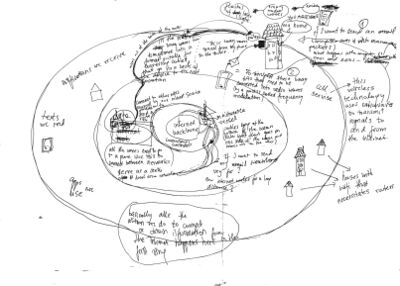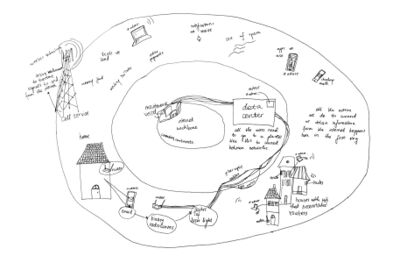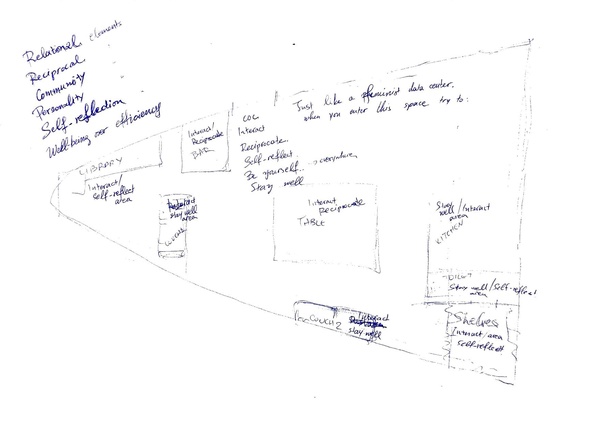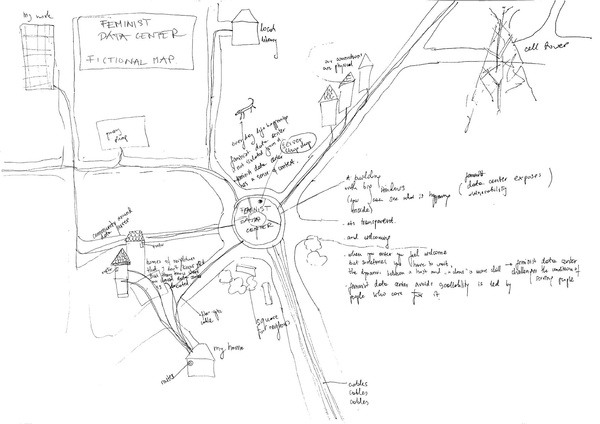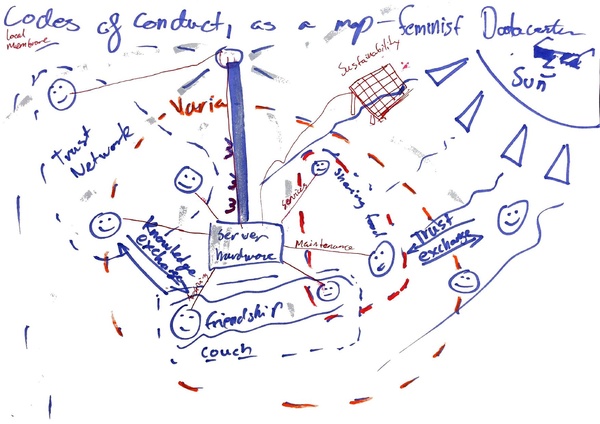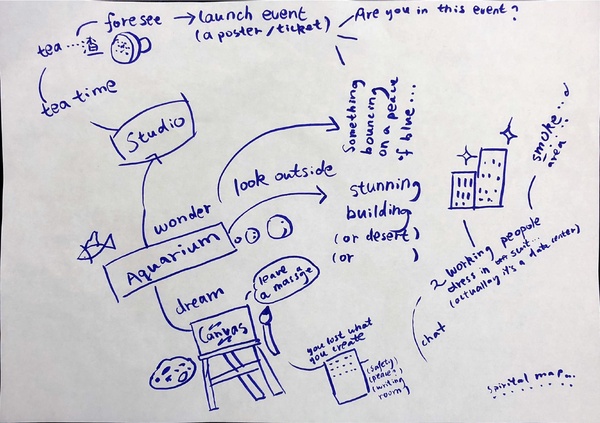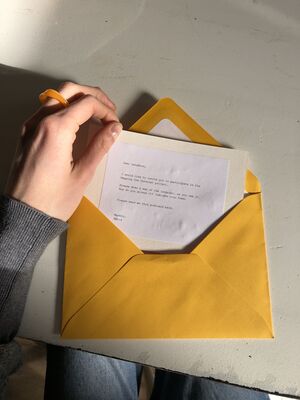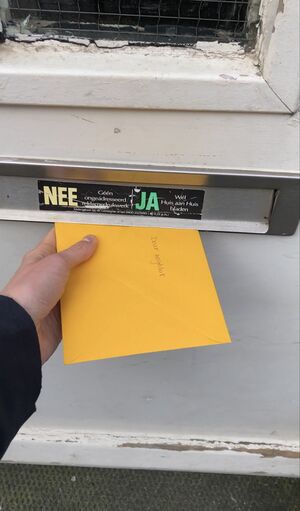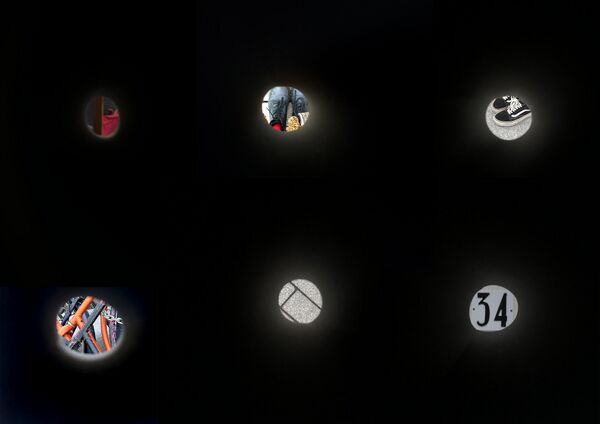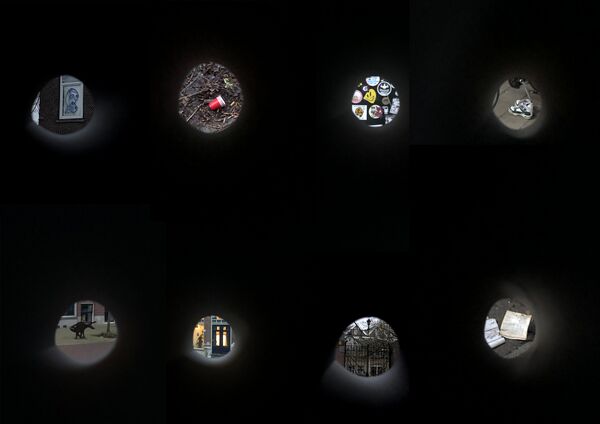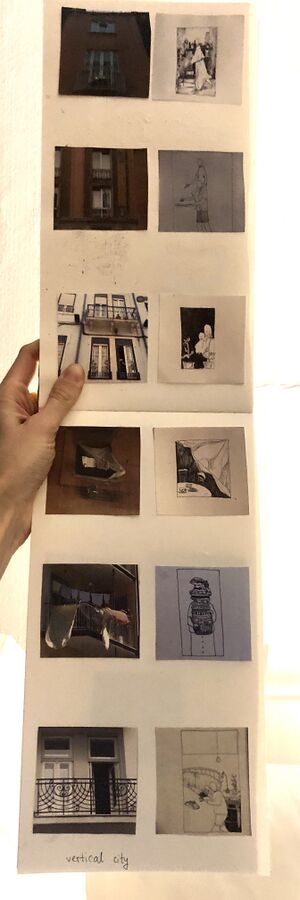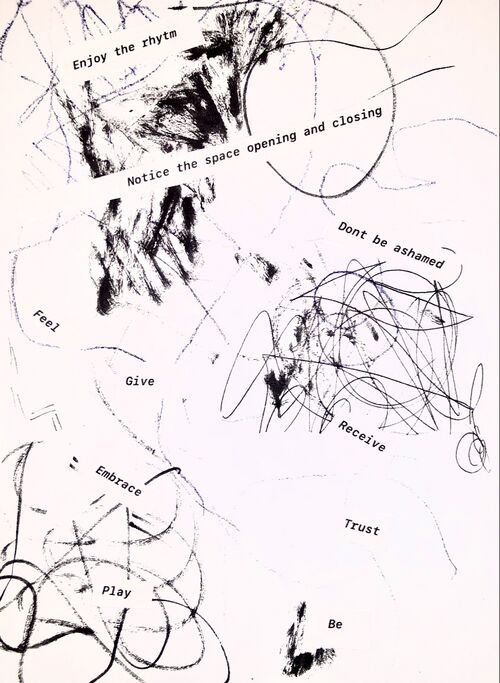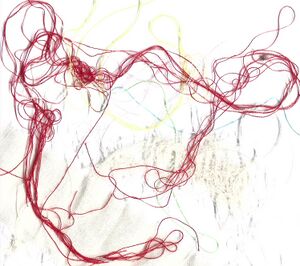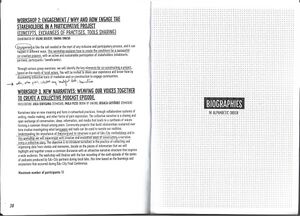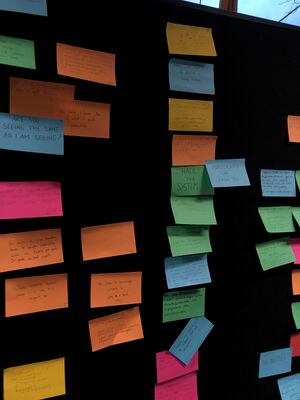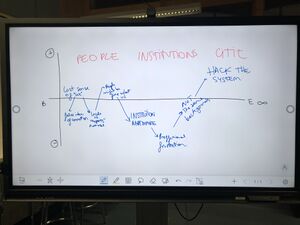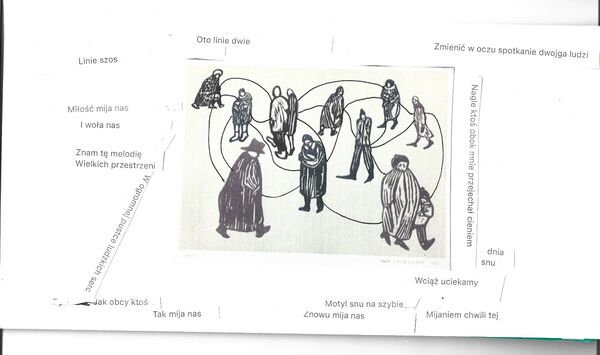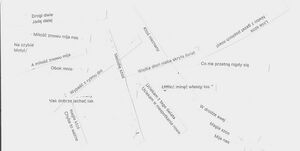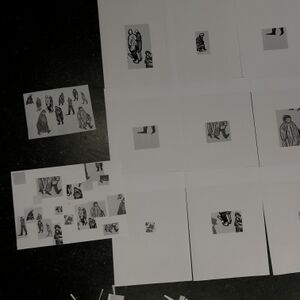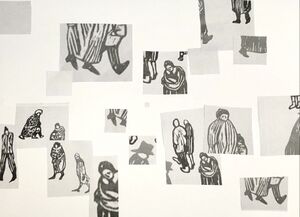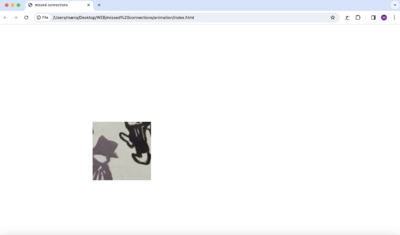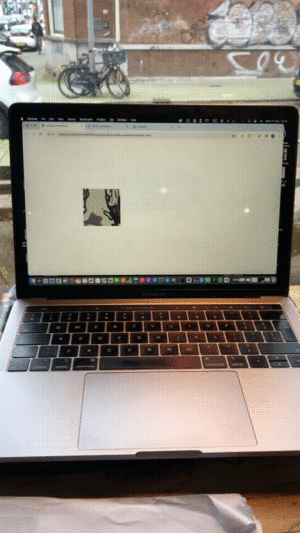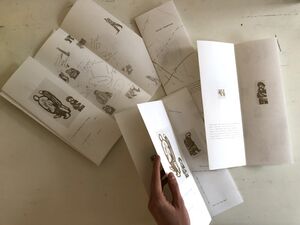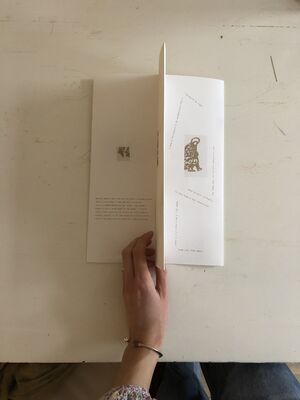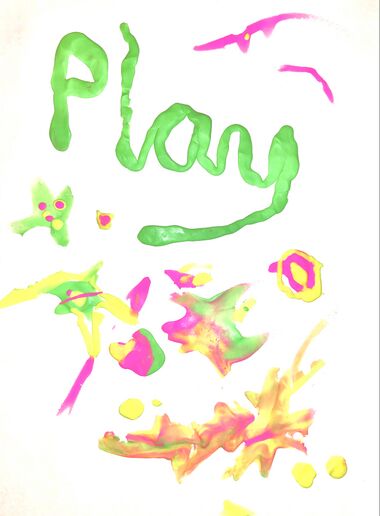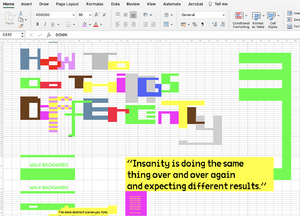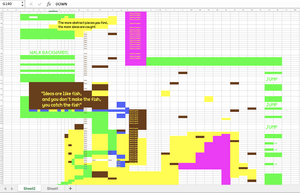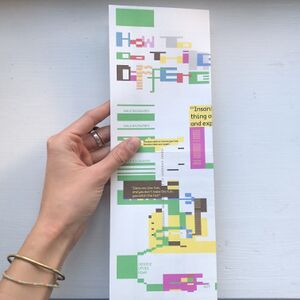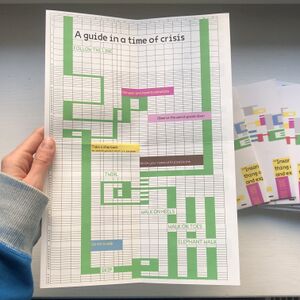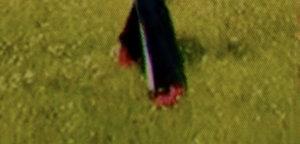User:Mania/Special Issue 23
Quilting infrastructures
/door
group /door = Victor, Lorenzo, Mania
How did we get here?
The door is a point of access. Walking through the door, guests have a chance to see the processes that take place here to ensure the flow of information that enables our everyday interactions on(off)line. This all happens behind an invisible infrastructure that we want to reveal.
How did we get here? invites you to interact with a website that takes you on a journey through the streets of our city, and welcomes you to our reimagined data center. Aiming for seamfulness by revealing and sharing processes, (re)sources, and tools.
This data center challenges the conditions of serving, by regulating the amount of connections. Thus you need an access token, which will be handed to you by someone who trusts you, to embark on the web journey. These tokens are limited to ensure that the resources are not depleted.
Every day emails we send, websites we visit, our online payments, messages we send to our loved ones passes through data centers. How come something that shapes our lives remains invisible? How does internet look like? We cant see it, we cant touch it, and therefore we tend to think about it as if it was something far from the tangible infrastructure and physical labour. We aim to unravel the tangible infrastructure underliying our online interactions that weaves its way in our cities being a part of an urban landscape.
By working with maps refering to the public space as well as abstract maps we point that an alternative feminist data- center is not isolated from our everyday actions. It acknowledges its role within a broader context, Exposes vulnerability, Challenges the conditions of serving. we welcome you to embark on a journey where we will unveil the processes, tools, and sources that defy the pursuit of seamlessness.
Text for the presentation:
By walking through the door, you have arrived in the reimagined feminist data center. Door is a point of access.
Some of you might already hold the access token that we handed you in the entrance. There is a limited amount of tickets, because our resources are limited and we try to challenge the serving conditions. Therefore, we ask you to pass this ticket to someone you trust when you are finished with the journey.
The material access token indicates few steps that need to be done to access the ”port” - a feminist data center. Since we explore the relation between - the inside and outside, the physical invisible infrastructure and a question of accessing - we as hosts, kindly ask you, the guest, to take your shoes off before we welcome you into our corner. But, before you enter, we want to show what is happening behind our online interactions and how we actually got here. We invite you on a web journey that will unravel physical infrastructures and easily overlooked network objects. This journey, through the internet is not a departure from the urban landscape but an integral part. Our connections are physical, and are lying underneath our feet in fiber optic cables.
The journey is weaving together the physical and digital realms: a paper access token, the web journey and the port are integral continuous aspects of this journey, highlighting the materiality which is further explored by other projects located in this data center.
How did we get here?
1. Access token
The material access token indicates few steps that need to be done to access the ”port” - a feminist data center. Since we explore the relation between - the inside and outside, the physical invisible infrastructure and a question of accessing - we as hosts, kindly ask you, the guest, to take your shoes off before we welcome you into our corner.
---> 2.Web journey
But before you enter wait a second, how did we accually get here? We want to shed some light on the hidden infrastructure that weaves it's way in the urban landscapes, therefore we invite you on a journey through our city to unravel what is easily overlooked. --->
---> 3.Port, reimagined feminist data center
following the web journey you will arrive in the feminist data center. This feminist data center was reimagined and configured by a group of experimental publishing students. Inspired by feminists servers and feminists methods, it serves as a place for acquiring system administration expertise, hosting various services, and motivating others to embark on a similar learning journey. Using open source for fostering collective thought, exchange of ideas we aim to create an environment where these concepts can gain a material form.
......------>.......Web journey is an invitation to join me in this walk where we try to see how internet weaves its way in the city and become part of urban landscape. What you see, and how you see it influence you beliefs and understanding. This walk is an attempt to share my perspective on some slice of the world. Because seeing through someone else's eyes can unravel things that were invisible for you and open a new little window to the world.
The intension was to highlight materiality, play with space but also with time and weave physical and digital realm.
Our online interactions stored on hidden servers own by private companies, somewhere in the world... Can we imagine an alternative? A place that reveals processes, tools, sources, rather than aiming for seamlessness.
Welcome to the feminist data center! Make yourself comfortable
Special Issue 23 observations, reflections, findings, methods, self directed research, happy accidents
"In this special issue, we will look at trans*feminist, art and community servers from different perspectives, highlighting the seamful processes that run through them and bring patches, tools and practices together. Together we will be working with the notion of quilting as methodology and conceptual framework, considering quilts as multi-layered structures that are built from a patchwork of different fabrics and have visible seams which bring together a variety of textures and materials. "The focus on seams reminds us that infrastructures are often built in relation to each other, and rarely from scratch. They "often collide: their seams are visible in their many edges, endings, and exclusions. [...] As a guiding metaphor, seams draw our attention to those places where multiple infrastructures are stitched together to achieve fleeting, nonstable, even ephemeral moments of alignment." (Vertesi, 268)
The metaphor for this project is a seam, as weaving together different voices, a variety of artistic experiments and practices. I want to delve deeper into what quilting as a methodology can be. I want to take a closer look on my neighborhood, see how people function here, what initiatives are taking place, and who lives here.
The weaving of different voices into a whole is unique in this project. I want to hear what my neighbors think about this place and learn their stories. Mapping together evinces of care, broadly understood. Care that includes various activities bringing people together, gestures that build a sense of security and belonging, all the actions, street exhibitions, free drawings, dialogue, temporary interventions that contribute to a learning environment. Knowledge is situated, but by sharing different perspectives, disciplinary positions, artistic and creative experiments, and collaborations, I want to conduct a research, that is based on accessible and practical methodological tools. And then share the findings with the people who were involved. How to involve people in the process, and make them part of the soolution not a problem?
Algorithmic Solidarity “After all, if we work from the network, we communicate using the network, why can't we use it as a tool for experimenting with new models of solidarity?”
Invisible infrastructure
I was wondering about the fact that infrastructure usually goes unnoticed until it stops working. How is it that the Internet, which basically shapes our everyday life, still seems for many of us, to magically appear in our homes. Stock images show the Internet mainly through the prism of the cloud metaphor. Usually the image vaguely shows several devices connected to each other and to the "cloud", but talking about the Internet using metaphors only makes the entire infrastructure, physicality and tangibility behind it remain invisible. And yet, its inspiring to acknowledge that while walking down the street, conversations, photos and secrets carried by fiber-optic cables flow under our feet.
Write like a brave person
Choose key words from the text and reflect on them one by one. Write like a brave person, as if no one else existed. Write courageously, for yourself, without being afraid of words. Corrections will come later... scatter the words; you can notice how they are interconnected and how they add context and significance. I can create a map of the relationships between these words or juxtapose two.
I can select text fragments and ponder what they mean to me and how they relate to my experience. What is my intention—reflection, criticism, discussion?
I can acknowledge my process and pose questions in the text. A visual representation of all the questions, quotes, and individual notes significantly clarifies and adds depth to the entire text.
Sketchbook
My artistic practice is not isolated from various texts, essays, and projects that serve as inspiration and contribute to shaping my practice. It is intricately connected, therefore I aim to share the sources that influence me and highlight the pivotal references in my creative journey.
This sketchbook serves as a mataphorical seam, uniting fragments and the overall creative process. In this context, a seam is not viewed as a scar but rather as a unifying element that amalgamates diverse methods and perspectives, ultimately forming a cohesive whole.
w e b s i t e ---->>> / Sketchbook
Hand drawn maps
Maps are subjective human interpretations. There is always something hidden, whether it is the overshadowing of language by the process of colonization, or certain aspects of culture, bits of knowledge or places not included in the dominant narrative. On the other hand, maps also have the potential to rename certain things and unlearn existing hierarchies. We can draw maps that tell hidden stories and show reality from different perspectives, also taking into account multiplicity of observations, relationships, criticism and emotions.
That's why I'm fascinated by hand-drawn maps. They have the potential to tell a new story of a place. They can incorporate emotions, names, a sense of adventure, and lots of valuable insights that resonate with you. I'm interested in comparing mental maps with official maps and noticing what stories they represent based on missing elements.
It's such a human thing that we want to remember, travel, discover, explore the unknown and document, and hand-drawn maps remind me of this.
Diving deeper inrto hand-drawn maps I found this book. One chapter includes a collection of fictional maps, which made me think about mapping networks of care through fiction and fabulation.
Mapping the invisible - How do you see the Internet?
I was wondering how others see the Internet. I organized a dinner during which I asked my friends to draw on the tablecloth how they see the Internet and how they access it. I only stressed that everyone should also include their house in the drawing. Together we created a map of the Internet, gradually adding more and more to it. Connections began to appear between our houses, more and more lines went to the data center placed on the tablecloth. We have also marked "sea of spam" and "island of social media". Each participant saw the Internet in such a different way. How come something that basically shapes our lives stays invisible, and so many of us still don't understand how it really works.
Mapping the Feminist data center. What makes it feminists?
Please send me this postcard back
Dear neighbor,
I would like to invite you to participate in the Mapping the Internet project.
Please draw a map of the Internet, as you see it.How do you access it? Indicate your home.
Please send me this postcrd back.Warmly,
Mania
The postcard never came back to me...
Performative experience of space
Walking as a method
The social and cultural implications of computing for urban surroundings are something I want to investigate further. Information processing is included into the urban environment's living layer. Information systems that track our actions and integrate into our daily lives intrigue me. "Intelligent" traffic signal controllers, customised text messages featuring coupons, and a technology that recognises shopper patterns.
What part do trust, independence, and privacy play in this city?
I want to pinpoint particular examples around which I could talk to people in the neighbourhood to highlight questions and raise concerns about what kind of future we desire.
I use walking as a method to investigate my neighbourhood, trying to shift out of my bubble, move away from my screen and headpones and open my eyes and ears to my surroundings. Walking as a method aiming to activate perception of a space.
"The relational potential of walking also emerges within art in a process of progressive appropriation of the everyday sphere: from the detached observation of the flaneur to the affirmation of more-active forms of participation, often determined to generate a transformation of the environment and fuelled by political radicalism, as in Situationism, or to experiment with other ways of living in a given time." Going out, Walking, Listening, sound making
scratch orchestra
Soundwalks
Going out, walking, listening, creating an environmental composition
Shift your attention from your own sounds and listen to the sounds nearby.
What do you hear?
- music
- people talking
- dogs
- something frying
- scisors
- wrapping paper
- mechanical sonunds
Can yo detect intresting rhythms?
-beats
-the highest and lowest pitch
Do you hear any intermitted sounds or very discrete sounds?
- cracking sticks
- bangs
- plates
What is the quiest sound?
-chewing
What is the loudest sound?
- music from the speaker
Those are sounds that are isolated from the bigger composition. Lets pick only favourite and create a spndscape in a context of this place - a market in nordplein.
Space opening and closing
Enjoy the rhytm
Notice the space opening and closing
Dont be ashamed
Feel
Give
Receive
Embrace
Play
Trust
Be
Neighbourhood lab
page dedicated to community empowerment in urban context. the aim is to collect tools and focus on potential of neighbourhoods as learning environments
Neighbourhoods as learning environments
Library - non commercial space. its a public leaving room, a place for knowledge sharing and knowledge production. Its a public good. Third place - not work not home
CheFare
https://che-fare.com What does it mean to transform public society?
- Changing power structure of society - Participation processes - Mobilizing, collective intelligence (library, museums, independent cultral centres, public spaces…) - Tools; mediation, translation (different intrests, trying to move power balance. Rebuild new discourses. Interdisciplinarity)
Role of conflict in participation -radical mediation
- Creating new power relations
Be clear with the participants on the purpose of the involvement. Kick off moment to define a clear way how we will work what are the shapes of the involvement.
1. RECONNAISSANCE The firts step is to understand the context from multiple perspectives Defining the target area, assesing the community involved , with their needs and issues
2. ENGAGEMENT
3. STORYTELLING / narratives Finding the right connection and perspective Setting expectations Communicating ideas / sharing vision Using storytelling practices
4. CO-CREATION
5. REFLECTION Assesing the impact of whatr is co-produced
Glossary: Essentail part of participatory projects. Trying to understand what do we mean by different terms.
COMPENDIUM OF LOCAL EXPERIENCES - LOCAL LABS
Sevilla local lab - Rosalia Guiterres and Julia Cortegana Zemos98
Create a common story of the neighbourhood, open to public, Archival gathering
Video magnetic tapes
Sofia local lab - yanina taneva, ideas factory
Glossary with common words A local market Creating a map - set as a common vision, common goal. For axample; map of tastes
A walk - a simple walk is a bridge to trust building
Marseille local lab
Participatory projects Promote initiatives of local organisations
Give visibility to co-creation projects
Palermo local lab
There is Fruit market in the neighbourhood, flee market clsose to cathedral, involve vendors of the market, started with interviewing them, gove light to the market ,
Storytelling workshops - peole where going to the shops and choosing objects and then creating a story
Together they are strong as vendors of the market. They have a cultural value that can be shared..
Between the vendors there where not always good relations…
Vendor - sprzedawca, handlarz
Berlin local lab - Luismi Gueli
Cultural transformation Breakfast club + sharing information about the neighbourhood - everyone bring something How the group of woman support each other and are there for each other
Film maker
Process of opening up and sharing and breakig up bubles, trying to build bridges between different spheres
Sharing our backround, coming from different places with different experiences and leaving aboroad
We are often trying to create something new, but you can strenghten what is already happeing.
You want A place that is more lively and respectful considering there are people coming from different cultures.
How to adress the hard aspects imposed on the residents. How to find the balance. There are some limits
QUESTIONS
What triggers you what kind of knoledhge do you need to start being a neighbourhood facilitaor?
---->>> Being curious about a specific space, willingness to engage , involve people and build a relationship with them. Create a story with them which gives voice to the residents. And then reflection ; a tool like engagement diary.
Frustracion; acknowledging existing problems, and learning, creatong learning community which is constantly learning
CHANGING NEIGHBOURHOODS
Learning from a process of social transformation What's IN-HABIT?
IN_HABIT Palmeras , "las Palmeras is one of the 5 poorest neighbourhood of Spain
Local peiople are the real experts, ask them what is happening in their ara , how they live and what they need
Empowerment as the motor of change
GOVERNING COMMONS
The Mumbai Ensemble
Dharavi - The most dense neibourhood in the city Not necesarilly helping each other but learning from each other…
Schools at the centre of the future:
in Brescia, urban regenerationstarts from educational contexts - Camilla Pinoli Brescia neighbourhood Spazio lampo - listening and involvement processes
HAU TO CONNECT
practices of belonging to a neighbourhood Who has never use this places How can we take action for a past and present inequalities?
s o l i d a r i t y
Listen to a place
Look what is already out there
What are the limitations of the practice?
Who is active?
How can you support what is already happening
Curate a dialogue
Look at the space as if you are looking at it for the first time
Have patience
Have you changed after the work?
Try different tactics
Find like minded people
Whose perspectives are misssing?
Practice power sharing
What participants need?
Turn it into a graphic novel
How participants perceive gentrification?
Invite your neigbours for a picnic
Draw portraits of your neighbours and ask them for their stories
Be present at the local markets
Give small things a big stage
Don't be afraid of words
Look at the means of production
Be aware
Communal love
Make the work visible
Do u have support ?
Be aware of your power
Be soft
Step back, give voice
Share autorship
how to implement feminists methods
L'ecole des communs
Walking - to get out of the 'buble' (reapriopriate the streets with adults and kids) Games- to connect theory to practices of commons + to unravel; imaginaries of sharing Local research
Temporlity
What our initiative leaves in time?
Documentation- languages to make visible the invisible (how do we let these experience speak for themselves and make it accesible for the publics that are not in tje neighbourhoods)
48-hour momentum
Transforming and enjoying Closing a road for a festival
Córka właścieciela restauracji która była ' facilitator", ojciec już nie zyje, wczesniej w jego restauracji ludzie wymieniali się informacjami i poznawali się i community kwitło tam
>>>>>>>There is a lot happening that is invisible. Coffe places where neighbours meet and share information. Work of care . Pharmacies…
Pleasure - is a recource that always function !
Exploring neighbourhoods - creative approach
day 2
DESCIVER CREATE ACT - RESHAPING THE LOCAL BY CO-DESIGN PROJECT WITH CHILDREN AND YOUTH
talk by Hendrik Weiner
Co-design project as a research tool- planning, design, and research not for or about people but with and by people concerned & interested
"those affected by a design should have a say in the design process" ~Bjogvinsson, Ehn, Hillgren 2012
- Scandinavian Participatory Design (PD) (Ehn, Nilsson, Topgaard 2014) - Participatory Action Research (PAR) (Kindon, Pain, Kesey 2010) _'research through design' + 'research by design' (Jonas 2007)
Methods:
- to perceive; expedition / walks
- to design; model making / collage /drawing/ building
- to produce and organise; build and cook / buy materials
- to interact and intervene; street performances/ mobile kitchen, street exhibition/ park(ing) day
Conclusion
- mutual learning process for all participants
- variable roles in the project
- new viewpoints, skills, networks
- starting point of local networks and co-productions
- instruments of outreach work
- local co-design project as participative method of urban design
UNDRAWING THE NEIGHBOURHOOD WITH CHILDREN
talk by Kitti Baracsi
Who produces knowledge on the city?
- Collective learning
- Projects with children - its not about teaching them something but together with them create a knowledge about a city
- Produce and share knowledge on their neighbourhood and complex urban issues, in collaboration with adults
- Creative formts as legitimate research output
Methodology
- What do we know?- collective counter maps of the neighbourhood
- What do we want to learn about?- exploratory walks(observation in the street ; sonic, visual map) ,map, etnographic research in the neighbourhood(interviews, drawings, photo, audio, and more)
- What do we wanmt to share from what we have learnt?reflection circles, drawing after the interviews as an analytical tool telling the stories, stop motion, collective maps, exhibition, tour, musical album
How children visualise the cities of today and tommorrow? The main qestion was what is the human heritage - children went to ask people
Kids recorded interviews, talked with people in local shops … Its possible to do research in different way then a text
Graffiti as a critical tool
- Graffiti as alternative narrative and use it as a prompt for discussion
- Walking as a accessible tool
- Territorial tags
- Gentrification
- "Berlin is dead" ---> So how did it die? Was it alive before?
- Its not about knowing but about exploring
Brachland: Audiowalk about urban utopias in weissensee
Katya romanova
Part of collective reimagine city - different methods, how you can explore the neighbourhoods
Berlin bones - podcast
Research tools
- photo, walks, derive
- mapping
- Studying existing project
- Attending local events
- Interviews / street conversations
- Documentartion/ photos, videos, sound, text
We tend to pass the empty spaces by...
- How this place came to be ?
- What is the future of this place?
- Why its surrounded with fence?
audio walk ~ Let your imagination fly and picture what u want ~
audio walk as an informational tool, but what's next?
Walk - the last point where the wasteland became a pop up bar for one evening (where participants quilted, crafted it together)
consider Temporarily use for some spaces where there is still nothing built there
Collective podcast: Weaving our voices together
Ways of building a narrative and understanding the importance of the story
I attended a workshop by Julia Cortegan and Paolo Pizzo where we focused on collectively building a narrative to create a podcast episode.
A collective narrative is a synthesis of many voices and an open exchange of thoughts and conversations, as well as the sharing of ideas. We started with mini interviews with each other, asking a few questions about 3 main keywords. Then, we wrote down the essence of these conversations and exchanges of ideas on pieces of paper. As a whole group, we went through what was repeating, whether we were seeing any patterns standing out, and from there, we decided what aspects we want to highlight and what tone our story would take. We finished the Workshop with the live recording of the last episodeof the podcast produced by Edu-City partners based on the conclusions of the conference.
missed connections - ImageMagick
inspired by Imgaemagick and how to manipulate an image with this tool I created this collage about missed connections. I was trying to cut out parts of the bigger picture and change the paths that those characters took
How many people I met on my way, with whom I exchanged glances, smiled at each other, or had some mini interaction, such as I showed someone the way, another time someone helped me carry a large hanger to the subway, I received flowers from a passer-by, but we were not brave enough to exchange contacts, or for some reason the situation did not allow it. How many such lost connections happen every day...
This publication is dedicated to all those tiny unexpected moments of contact with others. It celebrates their transience, smallness and unpredictability. Sometimes awkward, or filled with regret that they were lost, other times uplifting and hopeful - these unexpected clashes when our paths cross with others.
Then the festival of second chances begins, and people look for each other by posting various advertisements. Announcements such as "you smiled at me in the subway on Tuesday at noon - contact me", the regret of a missed opportunity and the belief that the person will be found again tugs at my heart.
However, encountering a stranger again is a very pleasant surprise. I have a few people in my neighborhood that I recognize by sight and it's always nice to run into them, but they're still strangers. Is this also a lost connection? After all, I don't know if I'll ever bump into them again.
the sincerity and kindness of all the little gestures, that happen when our paths cross,
even though some may never cross again.
I created a web zine with an animation with css and java script
The riso-printed zine can be found in the studio
Institute of play
Sandbox for experiments and happy accidents
How to do things differently
This zine is a guide in a time of crisis. When you feel stuck, you can follow the green line to get some instructions, cause “Insanity is doing the same thing over and over again and expecting different results”. ..............................................................................................................So observe the world upside down, walk backwards or do an elephant walk, use your left hand, or write your name with plasticine and fill your source of inspiration. This zine was made fully in Excel, cause I also felt uninspired and needed to to do something differently.
Kate Bush dance
Podsumowałam sobie ten rok i mimo, że strasznie dużo płakałam, to ten rok był też na maksa przygodowy i wiele udało mi się osiągnąć. Przeprowadziłam się do Rotterdamu do starego holenderskiego domu z ogrodem. Mój projekt oznakowań funkcjonuje w przestrzeni publicznej w Amsterdamie. Dostałam staż w Rotterdamie na którym mi bardzo zależało. Dostałam się na wymarzone studia! Nauczyłam się dużo nowych rzeczy: jeździć na deskorolce, grać na ukulele, chodzić po linie. Moja ilustrowana książka była na wystawie w Katowicach. Cały rok tańczyłam i chodziłam na ściankę wspinaczkową i już jestem w to suuper! Zaprojektowałam logo na wielki holenderski event. Przeczytałam mnóstwo książek i obejrzałam prawie wszystkie dokumenty Agnes Vardy. Uczestniczyłam w wielu szalonych warsztatach o interaktywnych tkaninach czy budowaniu z chleba. Poznałam wspaniałych ludzi, z którymi potem jeździłam stopem po Francji, bawiłam się na najmiejszym pod słońcem festiwalu filmowym, oglądałam noc spadających gwiazd we Włoszech. Dostałam pracę jako graficzka i ilustratorka. Moje ziny były na targach zinów. Robiłam dużo rzeczy poza moją strefą komfortu. A na koniec roku zorganizowałam sobie samotny wypad do Berlina, gdzie poznałam świetnych australijczyków.
What I want to learn
- Use html to make printed matters
- Collectively restyling any wiki articles/wiki with etherpad
- Paged.js
- MediaWiki
- Weasyprint

